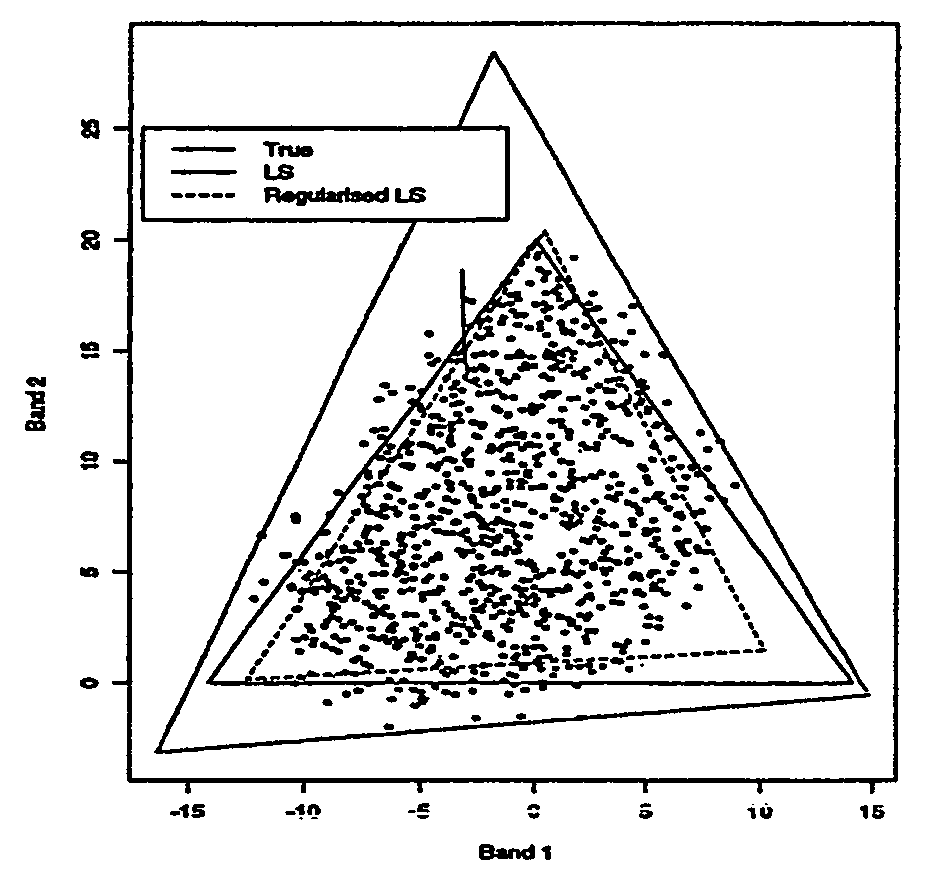Method of identifying endmember spectral values from hyperspectral image data
a technology of endmember spectral values and image data, applied in the field of identifying endmember spectral values from multi-spectral or hyper-spectral image data, can solve the problems of insufficient accuracy of correction for distortions, image distortions are also subject to distortion, and it is not enough to allow reliable comparisons to reference libraries, and match spectra with ground-based libraries
- Summary
- Abstract
- Description
- Claims
- Application Information
AI Technical Summary
Benefits of technology
Problems solved by technology
Method used
Image
Examples
Embodiment Construction
[0031]Multispectral image data is obtained from a multispectral scanner, such as the AVIRIS airborne scanner. A typical scan for mineral applications includes a short wave infra red scan with wavelengths in the region of 2,000 to 2,500 nanometers. This spectral range is useful for exhibiting distinctive shapes for important clay minerals. Typically this will provide 10's of thousands to millions of pixels or even many more.
[0032]A MNF transform is performed on the relevant bands of data to produce variables which are uncorrelated and approximately Normally distributed with an estimated error variance of 1. It is usual to retain MNF bands with the highest signal to noise ratios.
[0033]We let d be the number of MNF bands retained, N is the number of pixels, and M is the number of endmembers (assumed to be less than or equal to d+1).
[0034]It is convenient to think of the MNF data as an N×d matrix, whose ith row is written as Xi, and whose jth column is written as xj. Similarly, it will ...
PUM
| Property | Measurement | Unit |
|---|---|---|
| wavelength range | aaaaa | aaaaa |
| wavelength range | aaaaa | aaaaa |
| wavelength range | aaaaa | aaaaa |
Abstract
Description
Claims
Application Information
 Login to View More
Login to View More - R&D
- Intellectual Property
- Life Sciences
- Materials
- Tech Scout
- Unparalleled Data Quality
- Higher Quality Content
- 60% Fewer Hallucinations
Browse by: Latest US Patents, China's latest patents, Technical Efficacy Thesaurus, Application Domain, Technology Topic, Popular Technical Reports.
© 2025 PatSnap. All rights reserved.Legal|Privacy policy|Modern Slavery Act Transparency Statement|Sitemap|About US| Contact US: help@patsnap.com



